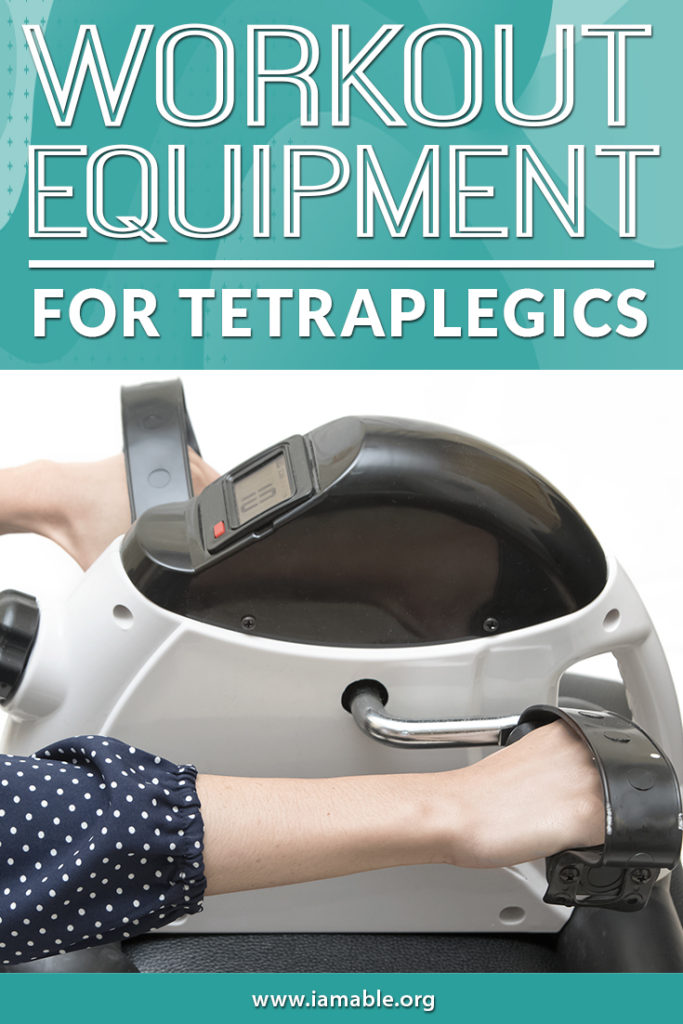Miami, FL 33186

Exercise is crucial after a spinal cord injury. However, now that you are experiencing new circumstances in life, you will have to work out in different ways than you ever tried before. For most people, it is difficult enough to work up the motivation to head to the gym. However, you may now require some special workout equipment such as a functional electrical stimulation bike or other things you may not find outside of a rehabilitation center.
Today, we will look at some of the best workout equipment for people with tetraplegia. Some are affordably priced and can be useful at home. Others, like an FES bike, will require that you choose to work with a state of the art rehab center. Here are the top ways to keep up your workout routine if you are living with tetraplegia.
A person with quadriparesis (partial paralysis in the four limbs) may be able to perform some exercise on their own using resistance bands. However, a person with tetraplegia will require assistance. These will be passive exercises. That means the patient’s muscles will not perform the work on their own. A physical therapist or caregiver will need to help move the person’s limbs. This can help to relieve some spasticity since the muscles are receiving a little exercise. Of course, you will want to start without the resistance and gradually work up to using the bands.
The advantage of this type of training is that it is very affordable. This can make it optimal for at-home use with the help of a caregiver. The downside is that the caregiver will have to be strong enough to help the patient use the bands and will require some training so that the exercises are beneficial rather than harmful.
Next, we need to consider functional electrical stimulation, or FES. This is a way to stimulate non-functional muscles without the need for passive exercises. The way the body causes your muscles to contract is through electrical impulses. FES works by producing electrical impulses externally. The therapist determines the amount of stimulation, where to attach the leads, and how long of a session is optimal.
The benefits of FES include getting exercise for the muscles that are not functional, helping to maintain bone density, reducing spasticity, and so on. In some cases, FES may also help the body to be able to rewire the neuromuscular system. As a result, some patients see a partial restoration of function. While this is not the norm, the potential makes this form of exercise a necessity for people with tetraplegia who could benefit from the slightest amount of regained function.
Now that you have a better understanding of what functional electrical stimulation is and what it can accomplish, we need to consider FES with the addition of a cardio exercise element. A functional electrical stimulation bike can help a person with tetraplegia to get some much-needed activity-based therapy. A functional electrical stimulation bike can provide a total body workout, even for someone living with tetraplegia. How?
An FES bike produces low-level electrical impulses. These impulses are computer generated to create the proper amount of muscle activity for making a peddling motion. Thus, a patient can pedal a stationary cycle regardless of whether they have any leg function or not. This allows a patient to get all of the benefits of FES but with the added advantages of activity-based therapy. It produces better heart and lung function, and also increases the neuromuscular benefits.
Additionally, some FES bikes are designed to assist with upper extremity exercise as well. The focus is on helping get some training for the arms. The intention is to be able to help a person with tetraplegia to restore some grip if possible. While a handcycle is a popular form of exercise for a person with paraplegia, unless the injury is low enough to retain some arm function, using a handcycle would typically be out of the question for a person with tetraplegia.
These advances in modern spinal cord injury therapeutic equipment allow someone with tetraplegia to get some exercise for non-functional muscles. It also provides one of the best chances of restoring any function by activating the muscles in a way that could potentially stimulate the rewiring of the nervous system.
The more serious the SCI, the more prolonged and more challenging recovery therapy will be. Regardless of the amount of independence you’re eventually able to regain, your attitude will play a significant role in how well you stick with the recovery program. This will improve your odds of optimizing your outcome. So how can you prepare yourself mentally for this challenge?
iAM ABLE is proud to offer our eBook, 7 Unbelievably Important Steps to Take to Thrive after Paralysis. While you may not be able to make a full recovery from your paralysis, you can still thrive, and the first step is knowing how to get into and stay in the right mental space. That’s what this eBook can help you to do.
We’re not asking you to be okay with your new circumstances. Your life may have changed entirely in the blink of an eye. That’s a lot to take in. However, the greater degree of acceptance that you can arrive at, the faster you can make progress and get your recovery started. Let us help you to challenge yourself, rise to the challenge, and meet your new goals!
Grab our free e-book 7 Unbelievably Important Steps to Take to THRIVE after Paralysis by clicking the image below.
